COMPUTING FACILITIES
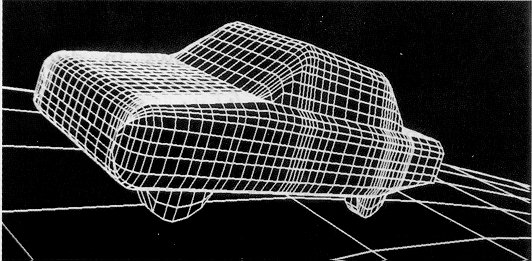 The
Laboratory Complex, in addition to the main computer center of the University,
has available various computer systems for theoretical investigations,
which include (in order of CPU speed) :
The
Laboratory Complex, in addition to the main computer center of the University,
has available various computer systems for theoretical investigations,
which include (in order of CPU speed) :
Two Hewlett-Packard 710 Workstations, one 80486 PC equipped
with an i-860 accelerating card, four SONY-RISC Workstations, a DEC 3100
and a SPARC+1 Engineering workstations, two 80486 PCs, on 80386 PC equipped
with Weitek math co-processor, two 80386 PCs equipped with 80387 math co-processors,
several 80286 and 8086 based PCs with corresponding math co-processors,
mainly used for educational purposes while several plotters and digitizers
are also available.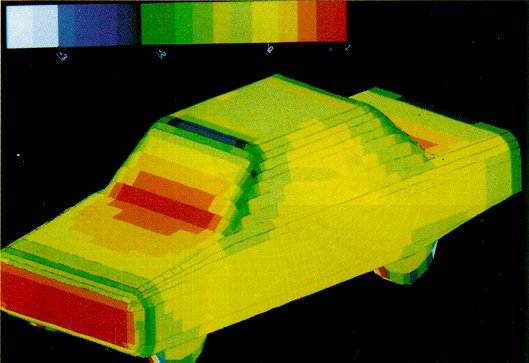
The staff of the Laboratory has developed unique computational
tools in the field of computational Aerodynamics for solving Navier - Stokes
and Euler equations on curvilinear coordinates in complex configurations,
for compressible and incompressible flows (finite difference and finite
volume methods) and boundary element methods for full aircraft configurations.
Computational grid and pressure distribution over a vehicle.
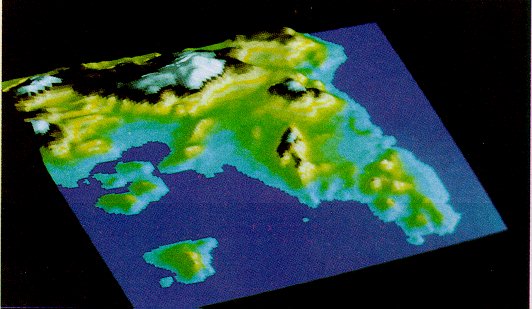
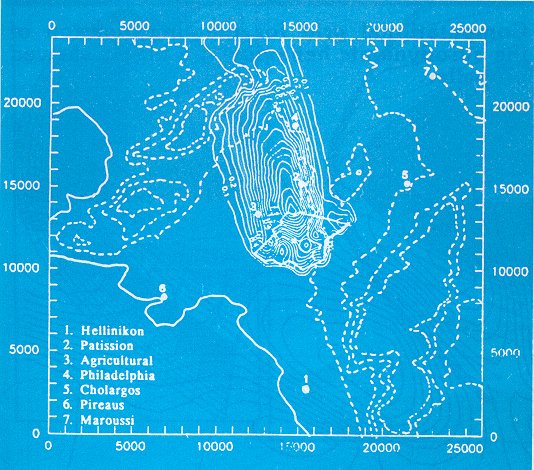
A computer drafted topography of the greater Athens area.

Predicted velocity field over the Skiathos island (3d code).
Concentration contours over the Athens basin at 10m
above ground level, at 10:00.
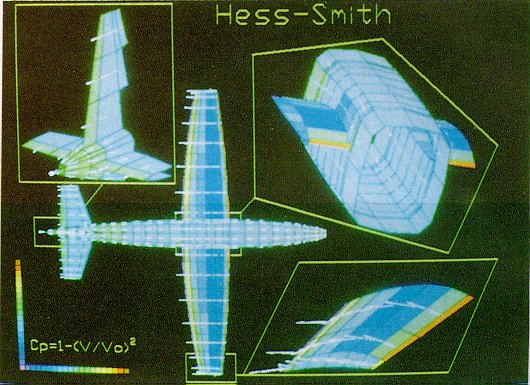 Examples
of such activities are studies on the effects of spoilers on the lift of
airfoils, slotted airfoils, pulsating flows in ducts, flows around propellers,
both steady and unsteady, flows in complex terrains for siting of wind
generators, flows around fuselages, flows around vehicles and flows around
full aircraft configurations.
Examples
of such activities are studies on the effects of spoilers on the lift of
airfoils, slotted airfoils, pulsating flows in ducts, flows around propellers,
both steady and unsteady, flows in complex terrains for siting of wind
generators, flows around fuselages, flows around vehicles and flows around
full aircraft configurations.
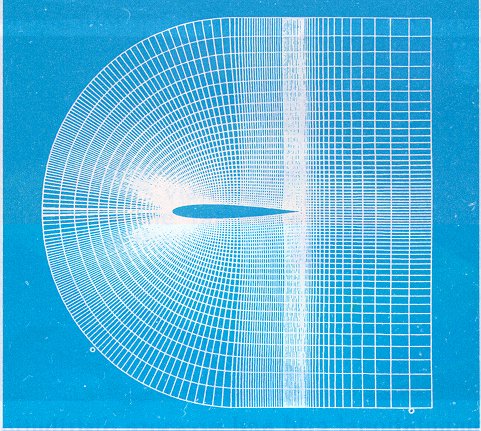
Computational grid and velocity distribution
over a simplified airplane geometry.
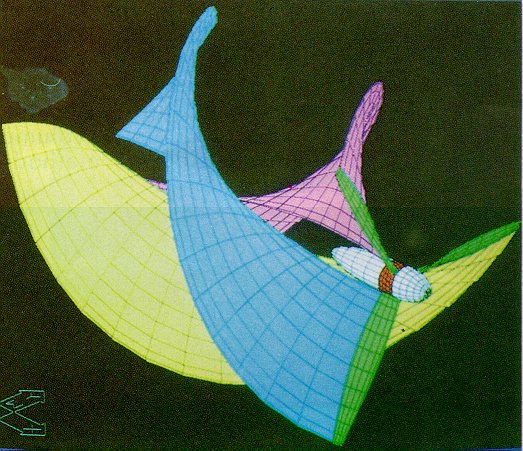
Computational grid for the investigation of the aerody-
namic behavior of a highly skewed propeller.
C-type orthogonal grid around a NACA 0012
airfoil and stream function at 20 incidence.
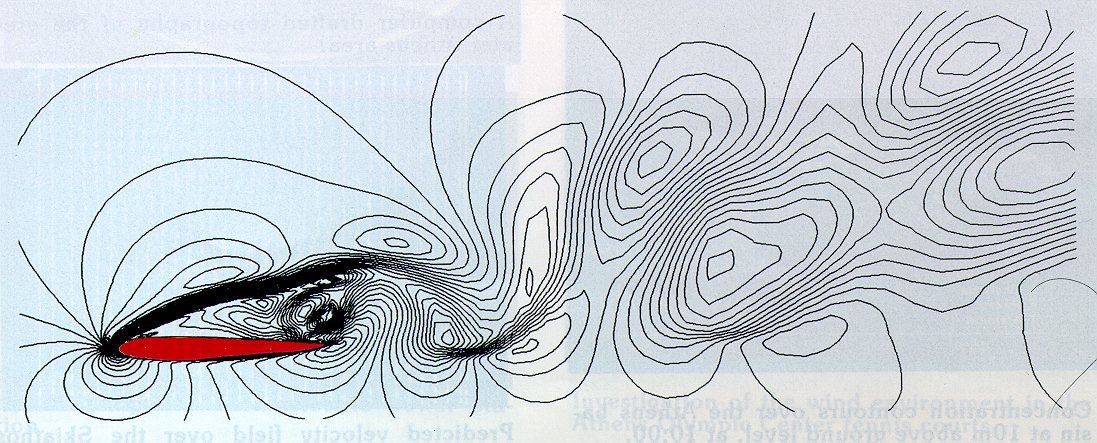
Unsteady, compressible flow around a NACA - airfoil.
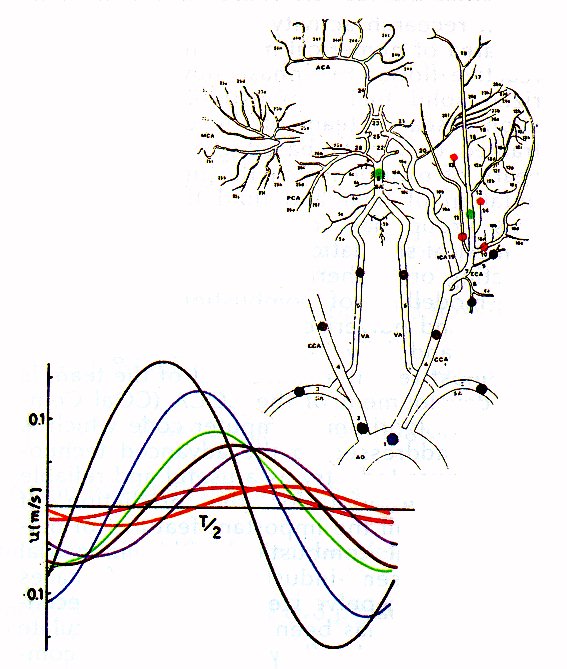 The
research activities in the field of low and high speed Aerodynamics led
to the development of efficient and reliable Navier - Stokes codes. The
codes are based either on central finite difference descretization, or
upwind flux vector splitting and flux difference splitting or Riemann methodologies.
The applications concern mainly external and internal flows for aeronautical
industries and contain subsonic, transonic, supersonic and hypersonic,
viscous, inviscid, steady and unsteady flows. Control of the flow field,
real gas effects, thermal effects, with heat addition, wall interference
effects, as well as, turbulent effects are included. The compressible flow
codes are extended also to incompressible ones using the artificial compressibility
techniques. The incompressible versions of the code are mainly used in
the field of biomedical engineering such as blood flow in arteries, urinary
flows etc. Modeling of such flows help the medical diagnosis. The codes
have been extended also for non-Newtonian fluids having also viscoelastic
behavior, with applications in molten polymer technology, such as the die
swelling problems during the process of extrusion.
The
research activities in the field of low and high speed Aerodynamics led
to the development of efficient and reliable Navier - Stokes codes. The
codes are based either on central finite difference descretization, or
upwind flux vector splitting and flux difference splitting or Riemann methodologies.
The applications concern mainly external and internal flows for aeronautical
industries and contain subsonic, transonic, supersonic and hypersonic,
viscous, inviscid, steady and unsteady flows. Control of the flow field,
real gas effects, thermal effects, with heat addition, wall interference
effects, as well as, turbulent effects are included. The compressible flow
codes are extended also to incompressible ones using the artificial compressibility
techniques. The incompressible versions of the code are mainly used in
the field of biomedical engineering such as blood flow in arteries, urinary
flows etc. Modeling of such flows help the medical diagnosis. The codes
have been extended also for non-Newtonian fluids having also viscoelastic
behavior, with applications in molten polymer technology, such as the die
swelling problems during the process of extrusion.

Modelling
of the anatomy of the cerebral arterial system
of
man and the corresponding mean-velocity pulses of
the
blood flow.
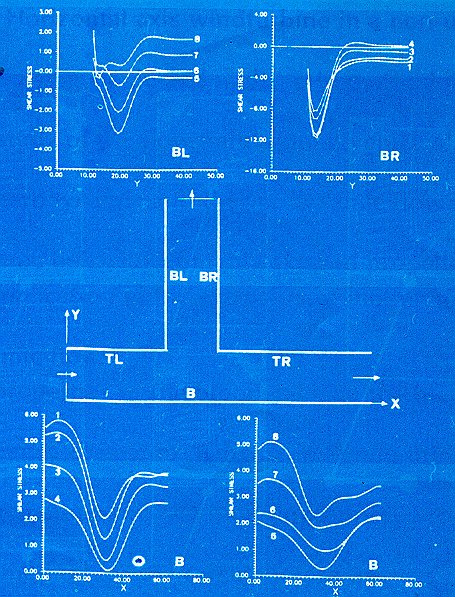
Computational mesh and isomach lines for the
viscous,
hypersonic flow around an hyperbola (M=10, Re= 1.2 104).
Unsteady
wall shear distribution for the pulsating flow in
arterial
bifurcation.
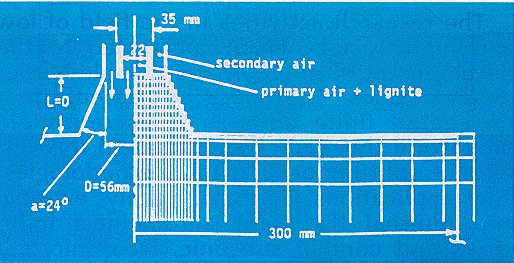 Within
the last six years there is a significant research activity of the Laboratory
in the area of numerical modeling of turbulent reactive flows, two-phase
flows and pulverized solid fuel combustion. The combustion research team
of the Laboratory is a highly trained university based group with many
years of experience in the numerical computation of hat and fluid flow
problems.
Within
the last six years there is a significant research activity of the Laboratory
in the area of numerical modeling of turbulent reactive flows, two-phase
flows and pulverized solid fuel combustion. The combustion research team
of the Laboratory is a highly trained university based group with many
years of experience in the numerical computation of hat and fluid flow
problems.
This group has for long worked on the numerical simulation of turbulent
two-phase reacting or isothermal flows, as well as on the modeling of combustion
of gaseous, liquid and pulverized solid fuels in axisymmetric and fully
3-D burner arrangements.
An
axisymmetric burner and the numerical grid.
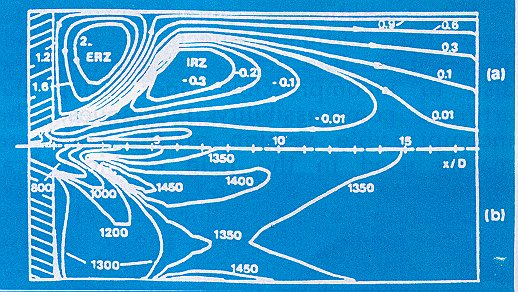 The
most recent achievement of the team is the development of the COCA (Coal
Combustion Algorithm) computer code which mainly addressed to the advanced
technology Power Industry as a useful and reliable engineering tool for
the prediction of practically all the important features of pulverized
coal combustion within industrial scale or semi-industrial scale furnaces
operating on pulverized fossil fuels. Recently the code has been extended
to calculate the in - cylinder flow of an internal combustion engine.
The
most recent achievement of the team is the development of the COCA (Coal
Combustion Algorithm) computer code which mainly addressed to the advanced
technology Power Industry as a useful and reliable engineering tool for
the prediction of practically all the important features of pulverized
coal combustion within industrial scale or semi-industrial scale furnaces
operating on pulverized fossil fuels. Recently the code has been extended
to calculate the in - cylinder flow of an internal combustion engine.
Predicted contours of stream
function and temperature.
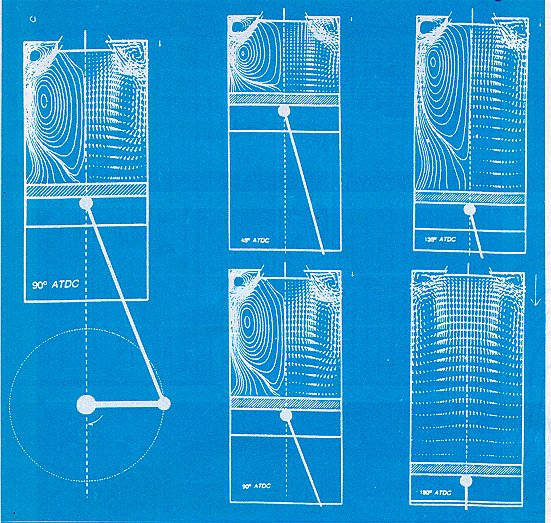
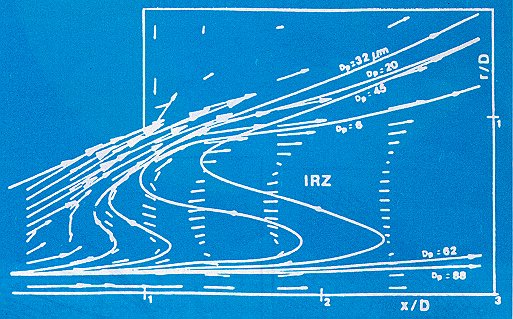
Particle
trajectories within the axisymmetric burner.
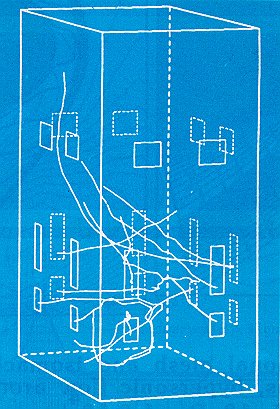
Predictions of the in-cylinder
fluid motion of a motoring
axisymmetric reciprocating Internal Combustion
Engine.
3-D
view of particle trajectories.
Recent Ph.D. THESES
Name Project
Mixos A. "A Contribution on the Aerodynamic study of a vertical axis wind
generator of Darrieus type", 1985
Voutsinas S. "Theoretical and numerical analysis of 3D inviscid subsonic flows",
1990
Glekas J. "Development of a 3D method for the dispersion of passive
contaminants over complex terrains (Athens basin case)", 1989
Ageridis G. "Experimental and numerical simulation of the adiabatic wind flow
field over the Athens basin", 1990
Papakonstantinou T. "Experimental and numerical study of the flow field around a
horizontal axis wind generator", 1990
Thomadakis M. "Numerical solution of compressible flows using central difference
Schemes", 1991
Drikakis D. "Development of Upwind Numerical Methods for High Speed
Aerodynamics", 1991
Trifonopoulos D. "Numerical solution of atmospheric flow field over complex
terrain", 1991
Anagnostopoulos J. "Numerical solution of concentration equation of two-phase flows in
axisymmetric burners", NTUA, 1992
Morfiadakis V. "Contribution to the theoretical and experimental investigation of
non-steady phenomena in turbomachines", 1992
Mouzakis F. "Numerical prediction of the behavior of airfoils and wings of wind
generators", 1993
Sarianos N. "Two-phase flows with burning in 3-D geometries of boilers", 1993
Stefanatos N. "Analysis of the response of a Horizontal axis windturbine in a non
uniform flow field", 1993
Dakos K. "Turbulent flow around airfoils using single and multi-grid
methodology", 1993
Rossis K. "Experimental and numerical study of the flow field around
vehicles", 1993
Papadakis G. "Numerical simulation of the aerodynamic and thermodynamic flow
field of coal burners", 1993
Alexakis M. "Investigation of the aerodynamic behavior of highly skewed
propeller"
Despotis G. "Unstructured elements and application in the extrusion of molten
polymers"
Pentaris A. "Unsteady effects in aerodynamic flows"
Kaliakatsos Chr. "Influence of the mechanical properties of the blood cells on the
blood flow"
Burrys D. "Effects of fouling on the efficiency of heat exchangers in lignite
utility boilers"
Theodorakakos A. "Development of finite volume method for 3-D fluid flows in
reciprocating internal combustion engines"
Papou Th. "Development of numerical method for the calculation of unsteady
flows in moving boundaries"
Ferlias G. "Development and construction of a flowmeter using the principle of
vortex shedding"
<Back to home page>